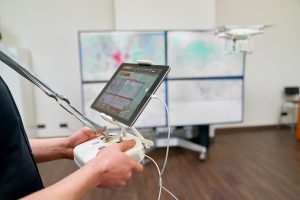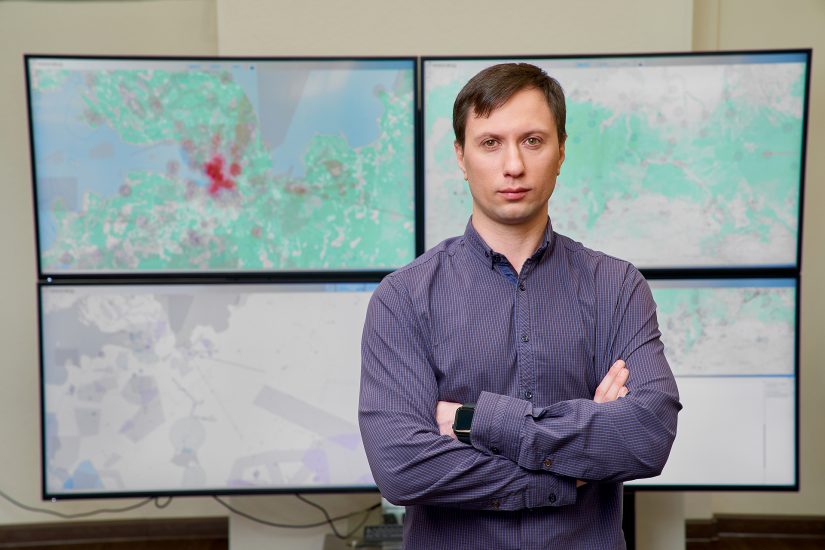Alexey Khripunov is Chief Executive Officer of Skyarc, a Russian UAS traffic management (UTM) company implementing its system in the airspace above St Petersburg
Can you give me a brief description of the Skyarc system and some timelines for when it will be fully operational in St Petersburg?
Skyarc is the first full-fledged UAS traffic management (UTM) system in Russia that uses navigation and surveillance data, meteorological information, aeronautical information and geospatial data. The innovative IT product is a distributed cloud solution. Preventing possible collisions of aircraft in the sky, Skyarc ensures conflict-free air traffic, safety and information security of flights, including protection of communication channels and resistance to cyber attacks. The application has the web interface and two-step reliable authentication to protect users and ensure information security.
Today, it is possible to obtain a row of digital services, such as flight plan submission, flight authorisations, weather data and flight tracking. Tactical deconfliction will be available in 2024-2025.
The base services are to be fully operational at the end of 2022 in St Petersburg, along with other big cities in Russia. The services are crucial for advanced urban air mobility.
How do drone operators connect to the system? And how do they receive alerts if emergency helicopter operations require them to cease operations?
The drone operator connects to the system through the remote pilot’s Skyarc application. In an emergency, the user receives warnings through the application immediately. The challenge here is that there is not a mandatory requirement for general aviation in Russia to be equipped with the appropriate transponders. So sometimes we even do not know about the helicopter flight as it is not transparent within the current CNS/ATM system. However, the Ministry of Transport is tackling the problem and the solution is to equip helicopters and aircraft with ADS-B/ mode S transponders.
When do you plan to add detect-and-avoid functionalities?
The platform can receive data from both cooperative and non-cooperative surveillance sources (MLAT, ADS-B, radars) along with information from cellular networks provided by mobile operators, including future 5G technologies. We are currently starting research to find out the best approach to ground-based collision avoidance systems development. Aeroscript works out the logic on models, investigates its suitability for UAVs with various maneuvering capabilities.
We are planning to start test flights this summer, albeit there is a large layer of issues associated with regulations. It will take at least two to three years to form the regulatory framework and confirm compliance with the regulator.
How have you worked with the national/local regulator to gain approval for implementing the system?
Aeroscript, with its well-known expertise both in air navigation technologies and IT, interacts with the Ministry of Transport of the Russian Federation and the Government of St Petersburg. We strongly believe that the Skyarc platform will be operated as the common digital UTM platform by the Russian air navigation service provider (ANSP).
What is the state of the commercial drone industry in the St Petersburg region – are you planning for any beyond visual line of sight (BVLOS) flights and flights above people in the near future?
About 1,000 UAV flights are performed in St Petersburg annually. We are conducting research together with a cellular operator on the suitability of its infrastructure for UAV flights. The issue is complex and depends not only on the digital platform, but also on reliable UAVs, CNS infrastructure for drones and the regulatory framework. However, we have already launched a series of tests of the service for electronic identification (eID) using the infrastructure of cellular operators and a small-sized UAV transponder AST-402.
Are there any plans to operate the system in other regions in Russia and/or international markets?
The platform has been tested in 17 million square kilometres of Russian airspace, including seven zonal ATC centres. For instance, drone operators from Samara, Rostov-on-Don, Leningrad Region, and other cities use Skyarc to carry out their flights.
The urban air mobility programme is supported by the local government and has been launched in the City of St Petersburg and Leningrad Region. The same project is to be started in Moscow this summer.
Are you aligned to the European U-space programme?
We closely following the activities of international organizations such as ICAO, RTCA and EUROCAE, as well as different programmes initiated in Europe, USA and China. Aeroscript is doing its best to harmonize the Russian UTM project Skyarc with the best world practices. We participate in major conferences and hope that soon we will be able to share our experience with the international community.





